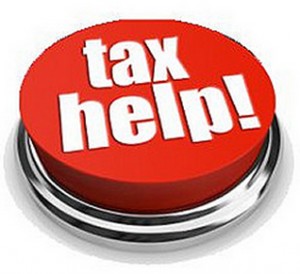It’s time to roll the dice at the tax board.
Sitting before us are three or five board members (always an odd number so there are never any “hung juries”). Their job is to rule on whether the petitioner has shown enough evidence to justify a reduction in the assessment. If one of the board members is an appraiser, I find that it makes getting important points and difficult concepts much easier to get across to all board members. Although it means more questions, I wish all tax boards had an appraiser at the hearing.
 Don’t forget that the petitioner has the burden of proof. Insufficient evidence always constitutes a ruling for the defendant. This is where the appraiser and either the tax consultant or the attorney have their say (rarely is it the property owner for a commercial property).
Don’t forget that the petitioner has the burden of proof. Insufficient evidence always constitutes a ruling for the defendant. This is where the appraiser and either the tax consultant or the attorney have their say (rarely is it the property owner for a commercial property).
Depending on the type of tax board hearing this is, the rules, procedure and protocol can vary. There are two types of tax board hearings: formal and informal. In the formal hearing, the plaintiff and his/her representatives are given a certain amount of time to present their case, the assessor rebuts the discussion and maybe the plaintiff gets to rebut the rebuttal. There’s little or no dialog between the assessor and the petitioner. The informal hearing is where the property owner or his/her representative, the assessor and the tax board members sit down at the same table and talk. There can be lots of back-and-forth discussions. Like my twelve part tax appeal posts, dubbed “Simpson’s Keys to Successful Tax Appeals”,you need to know the “rules” because how the case will be presented differs depending on what type of tax board hearing it is. Here are two real-world examples:
Informal
In an informal hearing where we all sat at a long, rectangular table, I presented an appraisal to the board. The assessor sat on one side of the table, I sat at the other and the board members sat at one edge. We quickly agreed that the only material area of disagreement was the capitalization rate. The assessor had about 40 sales and it was a requirement that all financial statements be submitted annually by property owners. The cap rates ranged from about 6.5 to 13 percent. The average was 8.5 percent. That was what the assessor had on his worksheet. He said it was the cap rate he assigned to the subject.
I presented my cap rate sales, discussed their similarity to the subject and concluded a 9.7 percent cap rate. Because it was an informal tax board hearing, I was able to directly ask the assessor what cap rates were the most similar to the subject, why they were similar and ask to see them. That created a huge problem for the assessor because they were based on “confidential” income and expense information. He was neither prepared to select the “most comparable” sales nor cite what the cap rate was for any individual sale. I then made the case that by selecting an average cap rate, that meant that all the properties in that jurisdiction had the same cap rate. He said that different cap rates were assigned to other properties, which undermined his reasoning why he selected an average for the subject. Lastly, he neither defined nor described the “average” cap rate sale. The tax board members, which include a State Certified General Appraiser (lucky me), could not accept that with about 40 sales, not a single cap rate sale could the assessor speak about. In a formal tax hearing I would never have had the chance for several back-and-forth discussions like this nor would I have been able to rebut anything he said. Judgment for the plaintiff.
Formal
In this particular formal hearing I sat at a table with a real property tax consultant. The Chief Assessor and his assistant sat at another table to the left, and in front of us both was a long, elevated platform where five tax board members sat. The real property tax consultant, a highly skilled CPA by trade, had never filed a tax appeal before. It was going to be a fun day.
The rules surprised us both. We had 10 minutes and 10 minutes only to make a case. There were two issues: the assessor had a materially higher square footage by selecting the wrong set of plans (they were not the “as built” set) and the building was parallelogram shaped with about 15 percent of dead space that could neither be used effectively nor rented.
Well with only 10 minutes,you can image what happened. I was able to present the plans and explain the square footage differential but never had time to go over the functional obsolescence problem. With only a 10 minute presentation for any commercial tax appeal, board members have no choice but to “rubber stamp” the assessment because the petitioner and his or her experts cannot possibly “demonstrate sufficient burden of proof” to get the assessment changed. If you’ve ever heard the term “elevator pitch” where you have 30 seconds in an elevator to convince your boss that you have a great idea, you’ll understand my predicament.
We could have gone to State Court but the board ruled that if an architect could certify that my square footage was correct, the assessor would be compelled by State law to reduce the assessment due to an “administrative error”. That’s exactly what happened when the architect measured the building. The resulting tax saving was so substantial that both the real property tax consultant and the petitioner were ecstatic. They could not justify taking it further. Sometimes you win, sometimes you lose and sometimes you win and lose!
So let’s assume that the tax board did not rule favorably for the taxpayer. It’s time for State Court. But before we get sworn in, there are some pretrial things to be decided. That’s the focus of Part 4.

